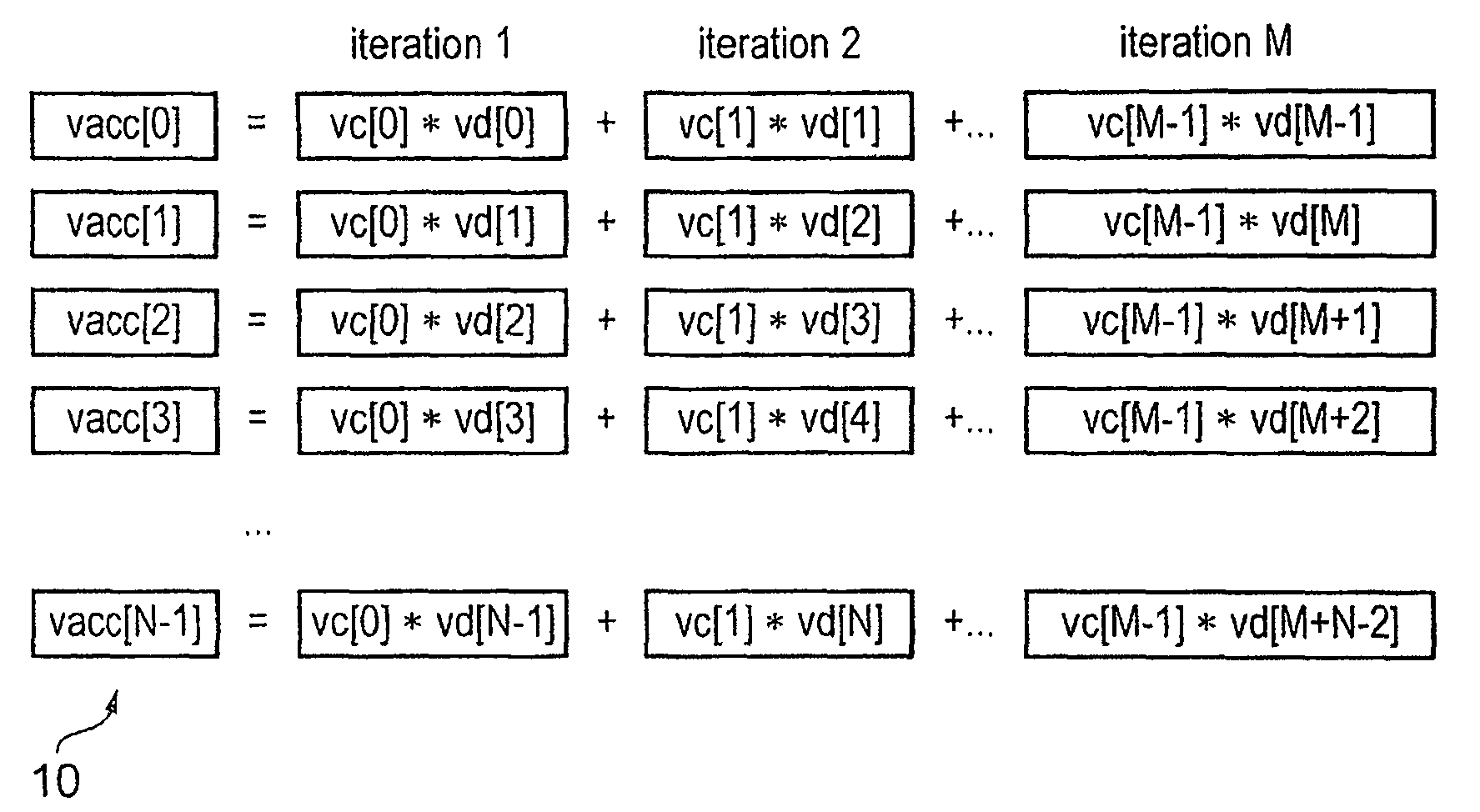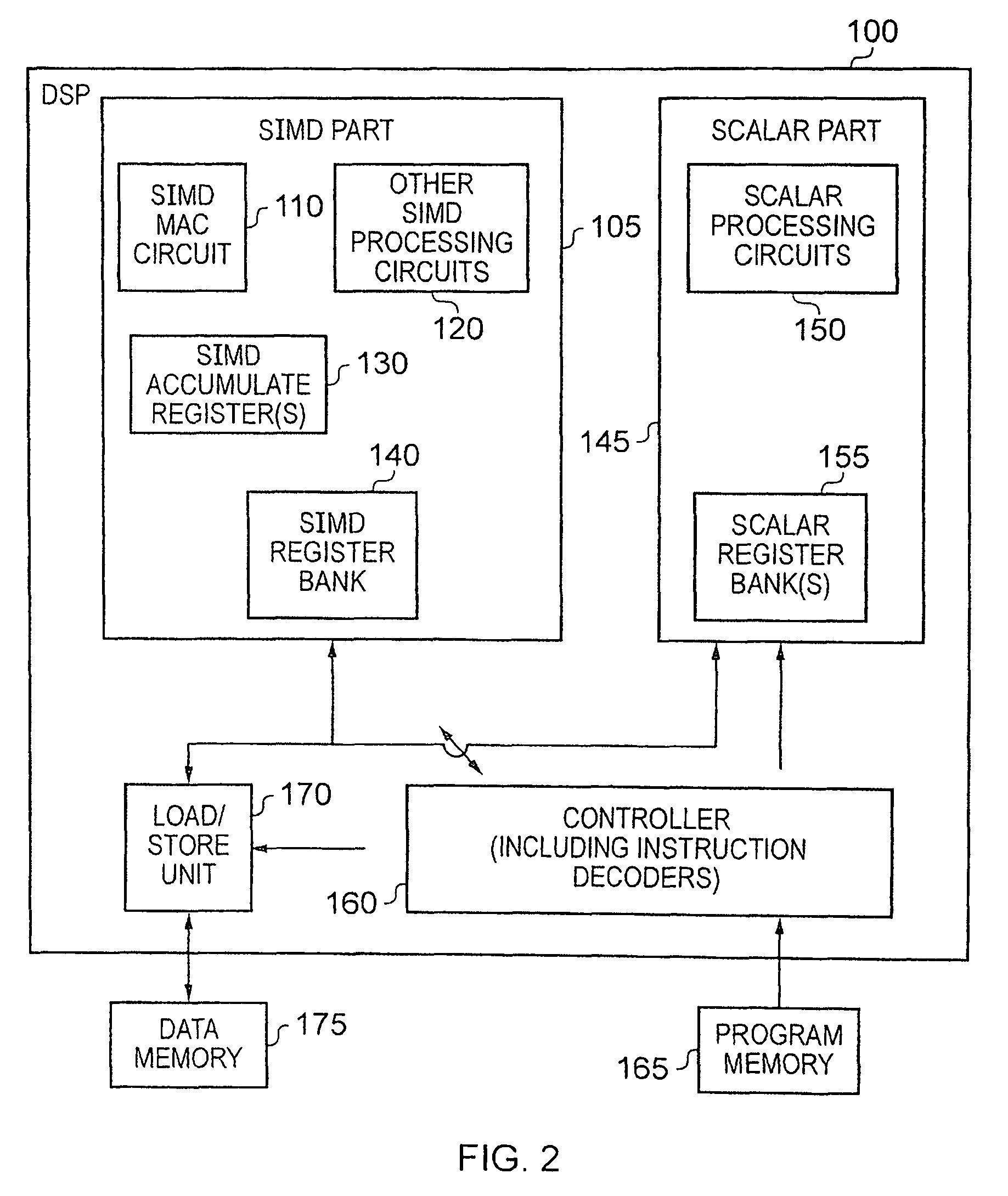Apparatus and method for performing SIMD multiply-accumulate operations
a multi-in-one, multi-in-one technology, applied in the direction of instruments, computations using denominational number representations, and multiple processing units, can solve problems such as power consumption, and achieve the effects of avoiding unnecessary power consumption, significant power saving, and reducing power consumption
- Summary
- Abstract
- Description
- Claims
- Application Information
AI Technical Summary
Benefits of technology
Problems solved by technology
Method used
Image
Examples
Embodiment Construction
[0062]In accordance with embodiments of the present invention, a repeating multiply-accumulate (repeating MAC) instruction is provided which takes as input operands a first vector of input data elements (vd), a second vector of coefficient data elements (vc), and a scalar value indicative of a plurality of iterations M required. Optionally, the repeating MAC instruction may also take as an input operand a vector of initial multiply-accumulate data elements (also referred to herein as initial accumulate data elements).
[0063]When this instruction is decoded by instruction decoder circuitry, control signals are generated that are used to control SIMD data processing circuitry in order to produce a vector accumulator output given by the following equation:
vacc[i]=vc[0]*vd[i]+ . . . +vc[M−1]*vd[i+M−1] for all ‘i’ in the vector
[0064]If a vector of initial multiply-accumulate data elements is specified this equation becomes:
vacc[i]=vacc[i]+vc[0]*vd[i]+ . . . +vc[M−1]*vd[i+M−1] for all ‘i’ ...
PUM
 Login to View More
Login to View More Abstract
Description
Claims
Application Information
 Login to View More
Login to View More - R&D
- Intellectual Property
- Life Sciences
- Materials
- Tech Scout
- Unparalleled Data Quality
- Higher Quality Content
- 60% Fewer Hallucinations
Browse by: Latest US Patents, China's latest patents, Technical Efficacy Thesaurus, Application Domain, Technology Topic, Popular Technical Reports.
© 2025 PatSnap. All rights reserved.Legal|Privacy policy|Modern Slavery Act Transparency Statement|Sitemap|About US| Contact US: help@patsnap.com



